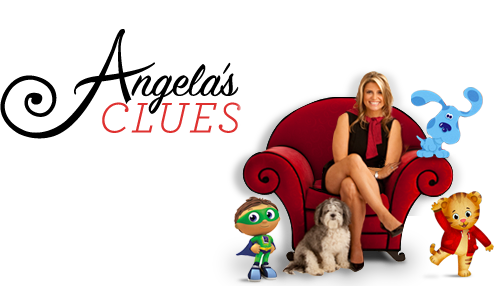Growing up Italian, I quickly learned that family dinners were very important-it didn’t matter where I was or what I was doing. If I called home to hint at eating at a friend’s house on a Sunday, it’d be met with ”That’s nice, but rush on home now for some macaroni with gravy. Everyone’s here. C’mon.” And God forbid I visit my grandmother and not eat something! “What’sa matter? You sick or something? Here, just eat a little something” as half a loaf of Italian bread would be shoved in front of me.
I was taught from a very early age that food is love, but I know now that linking food with love, or any emotion (guilt, happiness, sadness, or anger), for that matter, is the root of emotional eating. And I want to make sure that I don’t pass this type of thinking onto my own girls.
The truth is, it’s really easy to create negative eating behaviors in children. Even something that on the surface might seem to benefit your child—trying to get him to finish his veggies, for instance—can backfire. In a study of families of 142 kindergarteners, researchers from the University of California, San Francisco, discovered that “regardless of socio-economic status, marital status, or sex of the child, the overriding mealtime goal of the majority of parents of young children is to get children to eat more during meals.” In fact, 85 percent of parents tried to get their children to eat more, often using strategies such as pressure (“When I say eat, you eat!”) and reasoning (“Want to try the beans? I made them the way you like them.”). Very rarely were children restricted in their mealtime intake.
The result of such tactics: Kids often overeat. With my own kids, sometimes I find that even though they say they are hungry at dinner they want a snack five minutes later. What we have tried to do is to combat that by not having the snack as an option. We will go out of our way to make sure we offer something for dinner that my girls like, offer something sweet for dessert and then that’s it. What we have found is that, like any “habit”, they stopped asked for a snack right after dinner after about a week.
 Children have an innate capacity to regulate their energy intake. They know how to listen to their bellies and they know when they’re full. So, when we as parents pressure our kids to eat more or to eat to show their respect or love for us, we’re teaching them to override these signals. Instead of pleading, pushing or prodding our children to eat more, we need to teach them to listen to their own bodies—that means eating only when they are hungry and stopping when they are full. If our kids learn this and we help reinforce this important lesson, they’ll have avoided a major obstacle to healthy eating. So next time you’re tempted to plead, “just three more bites,” stop. Instead, respect your child’s ability to gauge his own hunger and fullness signals. In fact, many adults could learn a thing or two about healthy eating from our kids.
Children have an innate capacity to regulate their energy intake. They know how to listen to their bellies and they know when they’re full. So, when we as parents pressure our kids to eat more or to eat to show their respect or love for us, we’re teaching them to override these signals. Instead of pleading, pushing or prodding our children to eat more, we need to teach them to listen to their own bodies—that means eating only when they are hungry and stopping when they are full. If our kids learn this and we help reinforce this important lesson, they’ll have avoided a major obstacle to healthy eating. So next time you’re tempted to plead, “just three more bites,” stop. Instead, respect your child’s ability to gauge his own hunger and fullness signals. In fact, many adults could learn a thing or two about healthy eating from our kids.









 Tube-watching eaters consumed fewer fruits and vegetables, and more pizza, snack foods, and sodas than children who came from families where TV watching and snacking were kept separate, according to a study from the
Tube-watching eaters consumed fewer fruits and vegetables, and more pizza, snack foods, and sodas than children who came from families where TV watching and snacking were kept separate, according to a study from the 





 What do we do when our kids nag us to buy things that we know they don’t need? Set up an allowance. It is a great opportunity to give your kids the experience of managing their own money. It’s based on the same philosophy I use with my shows. I want kids to be interactive—to point and yell and participate because I believe that they learn better that way. Similarly, giving kids money in the form of allowance, enables them to learn about money—mistakes and all—by using small amounts of it..
What do we do when our kids nag us to buy things that we know they don’t need? Set up an allowance. It is a great opportunity to give your kids the experience of managing their own money. It’s based on the same philosophy I use with my shows. I want kids to be interactive—to point and yell and participate because I believe that they learn better that way. Similarly, giving kids money in the form of allowance, enables them to learn about money—mistakes and all—by using small amounts of it..
 From the Fred Rogers Center for Early Learning and Children’s Media comes the Fred Rogers Oral History Project. Within it are 3 of Sara Lindey’s Ph.D. interviews with Angela discussing Imagination & Attention, The Development of Blue’s Clues and Repetition as the Key to Mastery & Learning.
From the Fred Rogers Center for Early Learning and Children’s Media comes the Fred Rogers Oral History Project. Within it are 3 of Sara Lindey’s Ph.D. interviews with Angela discussing Imagination & Attention, The Development of Blue’s Clues and Repetition as the Key to Mastery & Learning.







